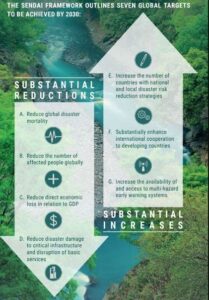October 24, 2025
- Phone :+917814622609
- Email :[email protected]
- Student Dashboard
General Studies Paper -1
Context: A high-level committee headed by the Union Home Minister approved several disaster mitigation and capacity building projects for various states that include combating urban flooding and checking glacial lake outburst floods.
About
- The committee approved nine proposals for funding from National Disaster Mitigation Fund (NDMF) and National Disaster Response Fund (NDRF).
- It include six projects in Telangana, Gujarat, Karnataka, West Bengal and Maharashtra for urban flood management.
- Project for Glacial Lake Outburst Flood risk mitigation for the states of Himachal Pradesh, Uttarakhand, Sikkim and Arunachal Pradesh.
- The committee also considered a proposal to implement Yuva Aapda Mitra Scheme (YAMS) in all the 28 states.
- It will be implemented in 315 most disaster-prone districts of the country for training of 1300 trained Aapda Mitra Volunteers as Master Trainers and 2.37 lakh volunteers exclusively from NCC, NSS, NYKS and BS&G (Bharat Scouts & Guides) in disaster preparedness and response.
Disaster Risk Reduction (DRR)
- It is aimed at preventing new and reducing existing disaster risk and managing residual risk, all of which contribute to strengthening resilience and therefore to the achievement of sustainable development.
- DRR strategies and policies define goals and objectives across different timescales and with concrete targets, indicators and time frames.
- Need of DRR: It is vital for safeguarding lives, reducing economic losses, promoting sustainable development, protecting the environment, enhancing community resilience, facilitating effective emergency response, addressing the needs of vulnerable populations, and supporting broader security
The Sendai Framework for Disaster Risk Reduction
- It is a global agreement adopted by UN member states to guide efforts in reducing disaster risk and building resilience to disasters.
- It was adopted at the Third World Conference on Disaster Risk Reduction in Sendai, Japan, in 2015.
- The framework represents a significant step forward from its predecessor, the Hyogo Framework for Action, focusing on a more comprehensive and inclusive approach to disaster risk management.
- The primary goal of the Sendai Framework is to substantially reduce disaster risk and losses in lives, livelihoods, and health by 2030.
- It recognizes that the State has the primary role to reduce disaster risk but that responsibility should be shared with other stakeholders including local government, the private sector and other stakeholders.

- Four Priority Actions:
- Understanding Disaster Risk: Improving knowledge of disaster risk through comprehensive risk assessments, data collection, and research.
- Strengthening Disaster Risk Governance: Developing effective and inclusive governance structures that integrate disaster risk reduction into policies and practices.
- Investing in Disaster Risk Reduction for Resilience: Increasing investments in DRR measures and incorporating risk reduction into development planning, infrastructure, and community resilience efforts.
- Enhancing Disaster Preparedness for Effective Response: Improving preparedness and response mechanisms to ensure a swift and efficient response to disasters.
Framework for DRR in India
- National Disaster Management Act, 2005: This act established the National Disaster Management Authority (NDMA) and provided a legal framework for disaster management in India.
- It created a three-tier system of disaster management involving the National, State, and District Authorities, each with specific roles and responsibilities.
- The NDMA is headed by the Prime Minister, emphasizing the importance of disaster management at the highest level of government.
- National Disaster Management Plan (NDMP) 2016: It outlines the strategic approach to disaster management in India, focusing on a holistic and integrated approach.
- National Disaster Response Force (NDRF): Established under the National Disaster Management Act, NDRF is a specialized force trained to respond to natural and man-made disasters.
- National Policy on Disaster Management (2009): This policy provides a comprehensive framework for disaster management, emphasizing a proactive approach to risk reduction, preparedness, and mitigation.
- National Disaster Relief Fund (NDRF): This fund supports disaster relief operations and recovery efforts.
- State Disaster Response Fund (SDRF): Each state has its own fund for disaster response and management at the state level.
© 2025 Civilstap Himachal Design & Development

